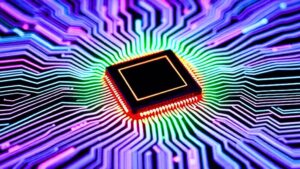Biohackers are turning to wearables to unlock the secrets of better sleep. They use these devices not just to track, but to experiment, optimize, and share what works—making sleep a science project you run on yourself.
Why Biohackers Track Sleep
-
Sleep is foundational for health: Poor sleep affects everything—energy, focus, immune system, pain levels, even how fast you age.
-
Data reveals hidden patterns: Wearables help spot what’s disrupting sleep, from stress to screen time or late-night snacks.
What Are Biohackers Tracking?
- Sleep stages: Deep, light, and REM sleep—how much time you spend in each.
- Heart rate variability (HRV): A marker for recovery and stress.
- Resting heart rate: Indicator of overall health and fitness.
- Body temperature and blood oxygen: Extra layers of insight, especially for sleep apnea or illness.
- Movement and breathing: Detects restlessness, snoring, or breathing disruptions.
Popular Wearables for Sleep Biohacking
| Device | What It Tracks | Unique Features | Price Range |
| Muse Headband | Brainwaves, heart rate, breath, movement | Real-time audio feedback, meditation | $250–$475 |
| Bia Smart Mask | Brain activity, blocks light, neural music | Sunrise alarm, neurofeedback | $419–$1,499 |
| Oura Ring | Sleep stages, HRV, readiness, temp | Stylish, readiness score | $349–$499 |
| RingConn Gen 2 | Sleep apnea, HRV, temp, respiratory rate | No subscription, long battery life | $299 |
| Whoop Band | HRV, sleep cycles, recovery, stress | Custom recommendations, all-day wear | $199 -$319/yr |
| Apple Watch 10 | Sleep stages, HR, temp, apnea detection | AI sleep reports, many extra features | $399+ |
| Fitbit Inspire 3 | Sleep stages, HR, temp, blood oxygen | Affordable, easy to use | $99.95 |
| Samsung Galaxy Ring | Sleep quality, snore detection, temp, HR | Waterproof, titanium build | $399.99 |
| Frenz Brainband | Brainwaves, eye/muscle movement, HR, SpO2 | Real-time AI-guided sleep audio | $680 |
How Biohackers Use the Data
- Spot sleep disruptors: A biohacker might notice deep sleep drops after late-night screen use. They try blue light blockers, track results, and adjust.
- Test interventions: Someone experiments with mouth taping or meditation, then checks their wearable for changes in HRV or REM sleep.
- Optimize recovery: Athletes use HRV data to decide when to train hard or rest.
- Fine-tune routines: Adjusting bedtime, room temperature, or diet, then measuring the impact.
Real-World Examples
- A user with chronic pain tracks sleep and finds that better sleep equals less pain.
- Another sees that lowering their bedroom temperature by 2°C increases deep sleep by 30 minutes.
- Someone else shares their data online, helping others learn what habits actually move the needle.
Tips for Getting Started
- Pick a wearable: Choose one that fits your budget and tracks the metrics you care about.
- Track your baseline: Wear it for a week without changing anything.
- Change one thing at a time: Test, measure, repeat.
- Share and learn: Join online communities to compare notes and stay motivated.
Key Takeaways
- Wearables turn sleep into actionable data.
- Biohackers use this data to run personal experiments and improve sleep quality.
- Popular devices include rings, headbands, watches, and masks—each with unique strengths.
- Small changes, tracked over time, can lead to big improvements in sleep and health.
FAQs
Q: How accurate are these wearables?
- A: They’re not medical devices, but they’re good for spotting trends and making improvements.
Q: What’s the best wearable for sleep biohacking?
- A: Depends on your budget and what you want to track. Oura Ring and RingConn are top picks for sleep stages and HRV. Muse and Frenz are best for brainwave tracking.
Q: Is tracking sleep every night necessary?
- A: Not always—track consistently at first, then check in after making changes.
Q: Can these devices help with sleep disorders?
- A: They can highlight patterns, but always consult a doctor for serious issues.
Q: Will tracking sleep make me sleep better?
- A: Awareness is powerful. Many biohackers report better sleep just by paying attention and tweaking habits.
What’s the first thing you’d change if your wearable showed poor sleep quality?
Would you try a new bedtime, tweak your environment, or experiment with diet?







